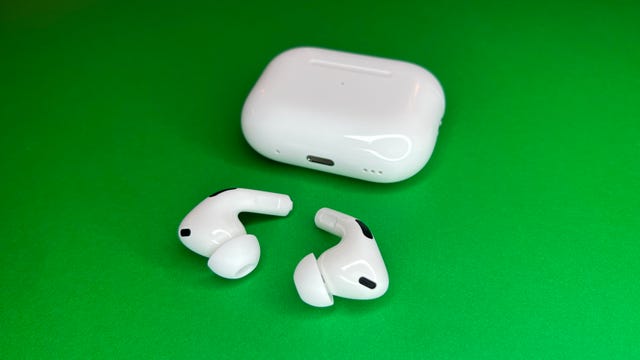Technologies
Apple AirPods Pro 2 vs. AirPods 3: The Biggest Differences
Active noise cancellation is the biggest benefit you’ll get from buying the AirPods Pro 2 over the AirPods 3.

If you’re trying to decide between Apple’s AirPods 3 and its AirPods Pro 2, the biggest questions are whether you want active noise cancellation in a noise-isolating design or open earbuds that don’t require you to jam silicone ear tips into your ears. Yes, there’s a price difference — the AirPods Pro 2 sell for about $200 online while the AirPods 3 cost about $150. But with only about $50 separating the two AirPods models, it’s probably more important to focus on those key differences rather than dwelling too much on their price.
Apple has bridged the gap between its Pro and regular AirPods by upgrading the AirPods 3’s design — it now looks more like the Pro’s design minus the silicone ear tips — and giving it the same IPX4 splash-proof water resistance rating. Additionally, the AirPods 3, like the AirPods Pro and Pro 2, also have Apple’s spatial audio with head-tracking feature.
Read more: Best Wireless Earbuds for 2023
But there are still certain benefits you can only get on the $249 AirPods Pro 2, the biggest being active noise cancellation and transparency mode. Multiple ear tip sizes, the ability to swipe up and down to control music volume and ultra wideband support are also exclusive to the Pro 2. But noise cancellation will likely make the biggest impact in everyday use, and it’s the most important factor to consider.
AirPods Pro 2 vs. AirPods 3
| AirPods Pro 2 | AirPods 3 | |
|---|---|---|
| Price (USD) | $249 | $169 (Lightning case) |
| Price (UK) | £249 | £179 (Lightning case) |
| Price (AU) | AU$399 | AU$279 (Lightning case) |
| Weight (earbuds) | 0.19 ounce | 0.15 ounce |
| Audio features | Active noise cancellation, Adaptive transparency, spatial audio with dynamic head tracking | Spatial audio with dynamic head tracking |
| Audio technology | Adaptive EQ, custom high-excursion Apple driver, custom high dynamic range amplifier, vent system for pressure equalization | Adaptive EQ, custom high-excursion Apple driver, custom high dynamic range amplifier |
| Durability | IPX4 sweat and water resistant | IPX4 sweat and water resistant |
| Charging | MagSafe or Lightning | MagSafe or Lightning (extra $10 for MagSafe case) |
| Multiple ear tips | Yes | No |
| Chip | H2 chip, U1 chip in charging case | H1 chip |
| Battery life (earbuds) | 6 hours of listening time | 6 hours of listening time |
| Battery life (case) | 30 hours of listening time | 30 hours of listening time |
| Microphones | Dual beamforming microphones; inward-facing microphone | Dual beamforming microphones; inward-facing microphone |
| Sensors | Skin detect sensor, motion detecting accelerometer, speech detecting accelerometer, touch control | Skin detect sensor, motion detecting accelerometer, speech detecting accelerometer, Force sensor |
| Controls | Hey Siri, touch controls | Hey Siri, Force sensor |
AirPods Pro 2 vs. AirPods 3: Design and case
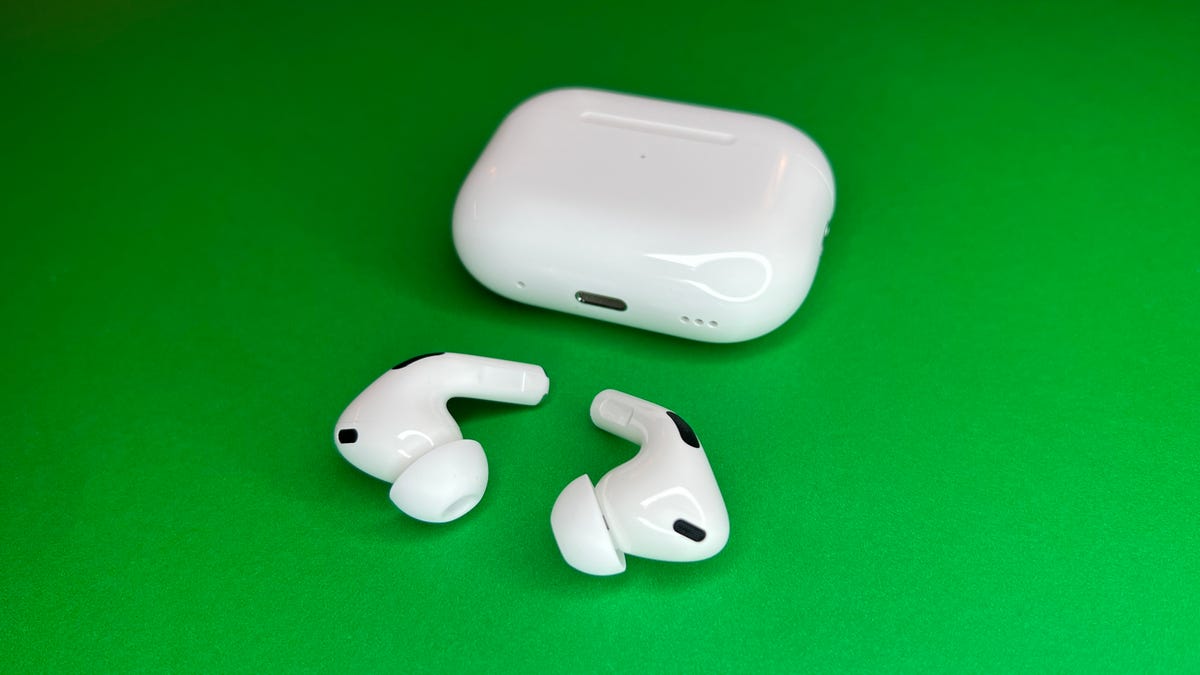
The AirPods Pro 2.
The biggest difference in terms of design is that the $169 AirPods don’t have interchangeable silicone tips like the AirPods Pro 2, which include four sizes to choose from. The AirPods 3 are also lighter than the AirPods Pro 2 at 0.15 ounce (4.3 grams) versus 0.19 ounce (5.3 grams).
The AirPods 3 and new AirPods Pro share some similarities when it comes to design, although it’s very easy to tell them apart. The AirPods Pro 2’s stems, for example, are noticeably shorter than those on the AirPods 3. But both models are sweat and water resistant, which could make them more appealing than the $129 regular AirPods for those who want to wear them during exercise.
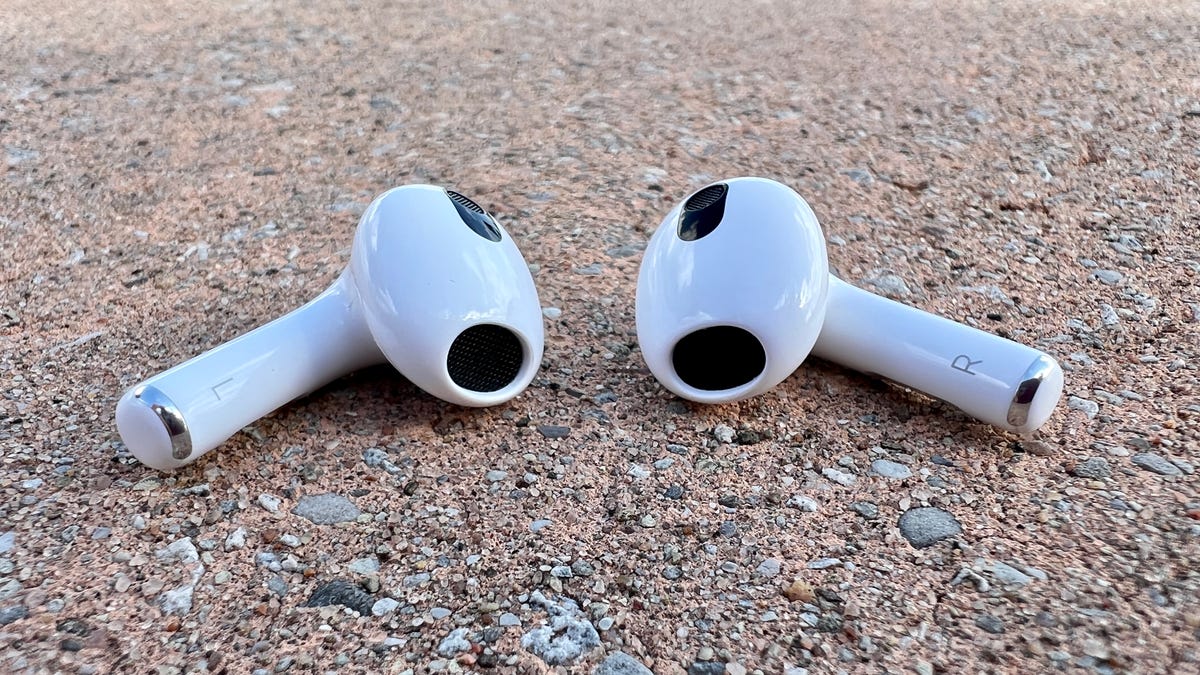
The third-generation AirPods.
The case for the AirPods 3 sort of looks like a cross between the case for the standard AirPods and that of the AirPods Pro. It’s much shorter and wider than the entry-level AirPods case, but it’s not as wide as the holster for the AirPods Pro. You can also charge the case for the AirPods 3 or the AirPods Pro via Apple’s wireless MagSafe charger, or by plugging it in with a Lightning cable. But you’ll have to pay an extra $10 to get the MagSafe wireless charging case bundled with the AirPods 3. The MagSafe-compatible case for the AirPods Pro 2 also has a lanyard loop, unlike the AirPods 3’s case.
The second-generation AirPods Pro’s case also has another capability: ultra wideband support. That essentially means the case has a built-in AirTag for easier location tracking.
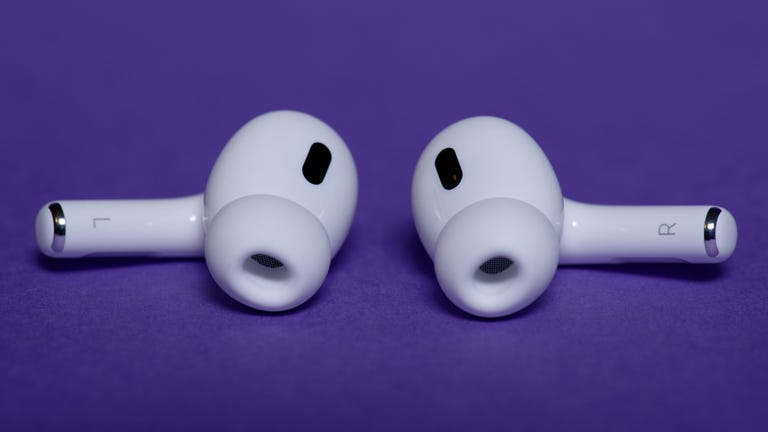
10:21
AirPods Pro 2 vs. AirPods 3: Audio
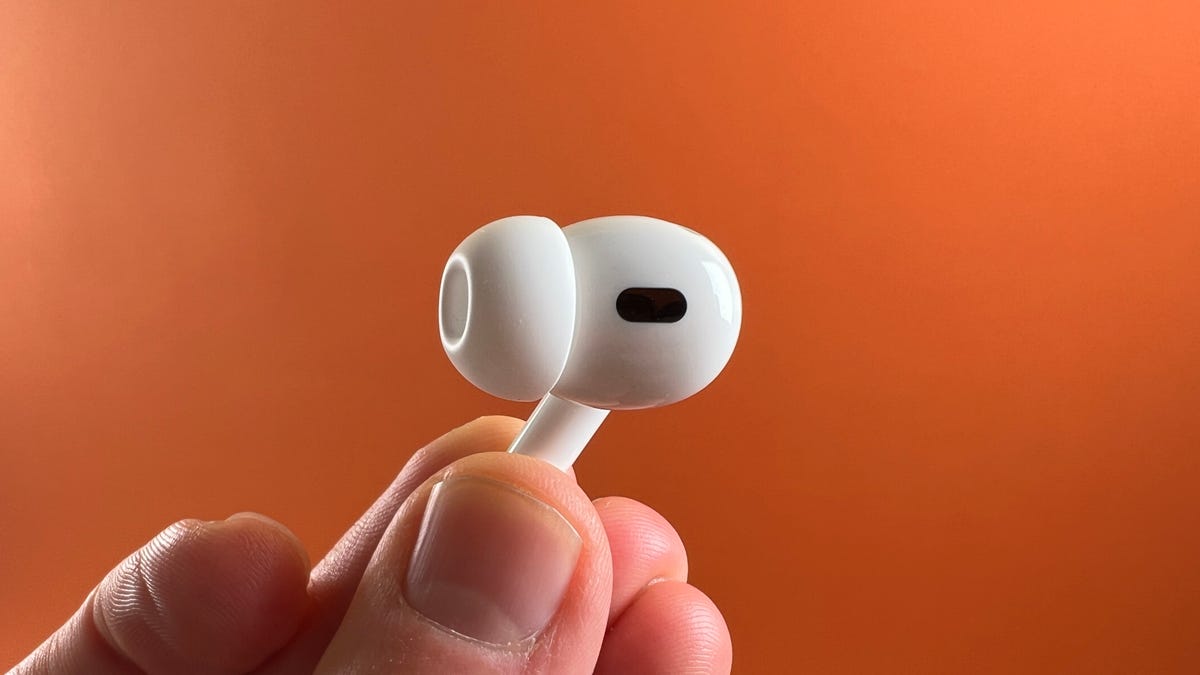
The AirPods Pro 2 have active noise cancellation and transparency mode.
You’ll still have to splurge on Apple’s top-of-the-line earbuds to get active noise cancellation and transparency mode. Since the second-generation AirPods Pro have Apple’s new H2 chip, they can cancel up to twice as much noise as the previous AirPods Pro, according to Apple’s claims. Transparency Mode has also gotten an upgrade on the second-generation model. The new chip can reduce loud noises from your surroundings when in Transparency Mode, which should make sounds like a passing vehicle seem less jarring.
That new H2 chip also brings improved audio to the AirPods Pro 2, further distinguishing them from the AirPods 3. As my colleague David Carnoy wrote in his review, the H2’s computational power helps the AirPods Pro process a broader range of frequencies.
You’ll also get swipe controls for managing volume levels on the AirPods Pro 2. The AirPods 3 just have Apple’s force sensors, which you can press to skip ahead, pause music or answer calls.
But both the AirPods Pro 2 and AirPods 3 have dynamic spatial audio and adaptive EQ. The former is essentially virtual surround sound, while the latter adjusts the sound to your ears.
AirPods Pro 2 vs. AirPods 3: Battery life
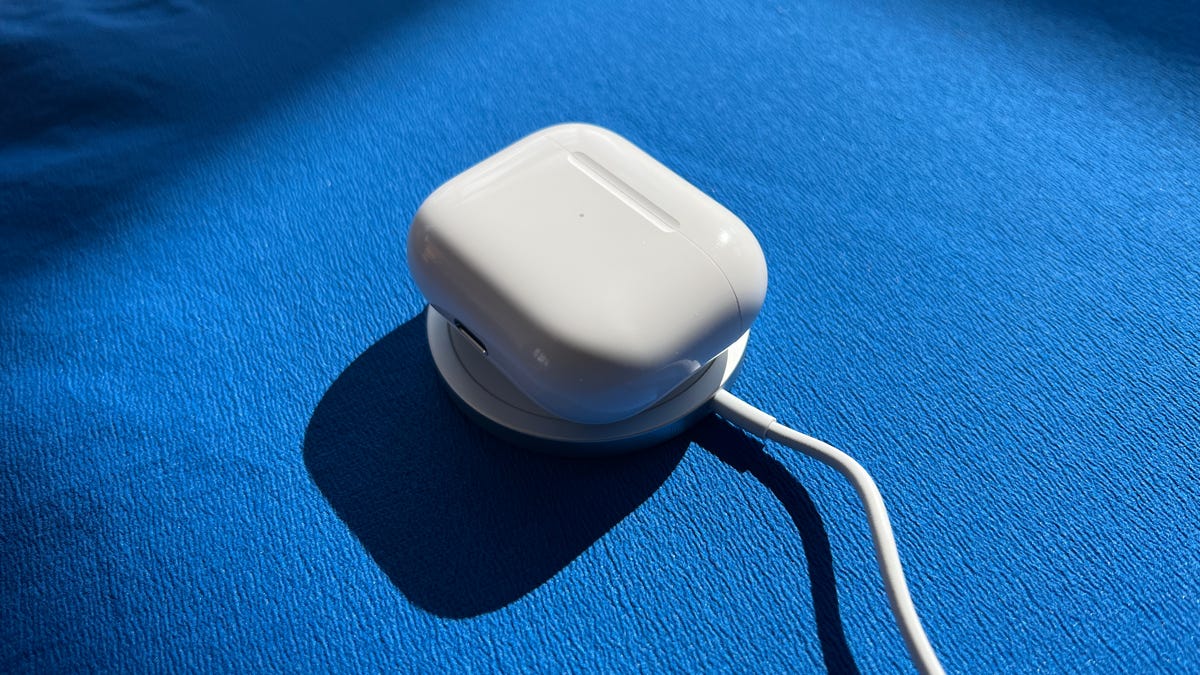
The AirPods 3 (pictured) and AirPods Pro 2 offer similar battery life.
Battery life is similar for both models, although there are some slight differences. Both earbuds should provide up to 6 hours of listening time, according to Apple’s claims. But you’ll get 5.5 hours of battery life when using spatial audio and head tracking on the AirPods Pro 2, while the AirPods 3 offer slightly shorter 5-hour battery life with that surround sound feature enabled. Apple also claims the AirPods Pro 2 provides 4.5 hours of talk time, while the AirPods 3 offer up to 4 hours.
The case for both earbuds should provide up to 30 hours of listening time, says Apple. But when it comes to talk time, you can expect to get 24 hours from the AirPods Pro 2’s case and 20 hours from the AirPods 3’s case. Five minutes in each case is expected to replenish around one hour of listening time or roughly 1 hour of talk time.
AirPods Pro 2 vs. AirPods 3: How to choose
The AirPods Pro 2 are for those who want active noise cancellation, better audio and a more customizable fit. You’ll also get some other perks, like the ability to track them down more easily should they get lost, thanks to the U1 chip. The AirPods 3 are a more suitable choice if you don’t care about noise cancellation and prefer earbuds with an open design (and yes, they cost about $50 less, so they do offer some appeal to those on tighter budgets). At the same time, the AirPods 3 still have more to offer than the AirPods 2, which lack features like water resistance, adaptive EQ and spatial audio with head-tracking.
The new AirPods Pro (2nd generation) are powered by Apple’s new H2 chip, which delivers more processing power while being more energy efficient, according to Apple. The new chip, combined with new low-distortion drivers, allows for improved sound that offers better clarity and depth. The noise canceling is also improved — Apple says the new AirPods have «double» the noise canceling of the original AirPods Pro. Additionally, the new AirPods add an extra hour of battery life, up from five to six hours with noise canceling on. Plus, a speaker in the case that emits a sound that helps locate your buds via Find My should they decide to hide from you.
Note that while Apple has discontinued the , they’ll remain on sale until supplies are exhausted. However, most people should get this newer model if they can afford it. The AirPods Pro 2 continue to see small discounts, dipping to as low as $223 during Amazon’ Early Access Prime event in October.
Take one look at the new design of the third-gen AirPods, and the first thing you’ll probably think is: «Those look like the AirPods Pro without ear tips.» You wouldn’t be wrong. While they’re more fraternal than identical twins, the AirPods 3 are shaped like the AirPods Pro, with the same shorter stems and same pinch controls as those of the Pro. Aside from the design change, which should fit most ears better than the AirPods 2nd Generation (though not very small ears), the biggest change is to the sound quality: It’s much improved. Also, battery life is better, and the AirPods 3 are officially water-resistant.
More headphone recommendations
- Best True Wireless Earbuds for 2023
- Best Back-to-School Headphones for 2023
- Best Noise-Canceling True Wireless Earbuds for 2023
- Best Wireless Earphones and Wireless Headphones for Making Calls
- Best Headphones for 2023
- Best Cheap Wireless Noise-Canceling Headphones Under $100
- Best Headphones for Running in 2023
- Best Over-Ear Headphones for 2023
- Best Cheap Earbuds and Headphones
- Best Sony Headphones for 2023
- Best Apple AirPods Max Alternatives for Less: Sony, Bose, AirPods Pro and More
Technologies
The Most Exciting Video Game Rumors and Leaks Ahead of 2026
Technologies
Today’s NYT Mini Crossword Answers for Wednesday, Dec. 17
Here are the answers for The New York Times Mini Crossword for Dec. 17.

Looking for the most recent Mini Crossword answer? Click here for today’s Mini Crossword hints, as well as our daily answers and hints for The New York Times Wordle, Strands, Connections and Connections: Sports Edition puzzles.
Need some help with today’s Mini Crossword? Read on. And if you could use some hints and guidance for daily solving, check out our Mini Crossword tips.
If you’re looking for today’s Wordle, Connections, Connections: Sports Edition and Strands answers, you can visit CNET’s NYT puzzle hints page.
Read more: Tips and Tricks for Solving The New York Times Mini Crossword
Let’s get to those Mini Crossword clues and answers.
Mini across clues and answers
1A clue: Nod (off)
Answer: DOZE
5A clue: Naval submarine in W.W. II
Answer: UBOAT
7A clue: Tricky thing to do on a busy highway
Answer: MERGE
8A clue: Heat-resistant glassware for cooking
Answer: PYREX
9A clue: Put into groups
Answer: SORT
Mini down clues and answers
1D clue: Break up with
Answer: DUMP
2D clue: Falls in line, so to speak
Answer: OBEYS
3D clue: Legendary vigilante who cuts a «Z» with his sword
Answer: ZORRO
4D clue: Rarin’ to go
Answer: EAGER
6D clue: Common reminder for an upcoming appointment
Answer: TEXT
Don’t miss any of our unbiased tech content and lab-based reviews. Add CNET as a preferred Google source.
Technologies
You Can Watch an Exclusive Avatar: Fire and Ash Scene on TikTok Right Now
Disney and TikTok partner on an immersive content hub for James Cameron’s latest movie about the alien Na’vi.
If you’re not quite ready to head to the theater to watch Avatar: Fire and Ash, an exclusive scene preview might sell you on the visual spectacle. As part of a new collaboration with the social media giant, Disney is posting snippets of its new movie to its TikTok account.
This scene isn’t part of any trailer and won’t be posted to other social media accounts, making TikTok the only place you can view it — unless you buy a movie ticket. A first look at the new movie’s scenes isn’t the only Avatar-related bonus on the social media platform right now, either. TikTok has partnered with the house of mouse to bring an entire «immersive content hub» to the app.
A special section of TikTok includes quizzes and educational videos that explore the alien world of Pandora shown off in the movies. On TikTok, you can take a personality quiz to find out what Na’vi clan you most closely align with and unlock a special profile picture border to use on your account.
Science and fiction blend together with a series of videos from real doctors who explain the basis for some of Avatar’s world-building. If you want to learn about exoplanets or how realistic the anatomy of the movie’s alien animals is, these videos will feed your brain while still providing entertainment value.
Perhaps the most enticing part of Disney’s latest social media collaboration is the opportunity for fans to win prizes and trips. TikTok creators who make edits with the #TikTokAvatarContest hashtag are entered into a competition to win Avatar merchandise. The biggest winners will be able to take a trip to visual effects studio Wētā Workshop in New Zealand or visit Avatar director James Cameron’s Lightstorm Entertainment Studio in Los Angeles.
Avatar: Fire and Ash is the third installment in director Cameron’s cinematic passion project. While the first Avatar movie was released in 2009, Cameron didn’t release another entry in the franchise until 2022. In total, there is a five-movie arc planned for the indigo alien Na’vi on the moon of Pandora.
The Avatar movies are known for pushing the boundaries of CGI visual effects in cinema. They are also historically big winners at the box office: the original Avatar is the highest-grossing film of all time, earning $2.9 billion across its theatrical releases. Its sequel, Avatar: The Way of Water, is the third-highest-grossing film of all time, trailing Avengers: Endgame. You can stream those movies on Disney Plus.
It remains to be seen whether Avatar: Fire and Ash will financially live up to its predecessors. The film currently has mixed reviews from critics on Rotten Tomatoes.
-

 Technologies3 года ago
Technologies3 года agoTech Companies Need to Be Held Accountable for Security, Experts Say
-

 Technologies3 года ago
Technologies3 года agoBest Handheld Game Console in 2023
-

 Technologies3 года ago
Technologies3 года agoTighten Up Your VR Game With the Best Head Straps for Quest 2
-

 Technologies4 года ago
Technologies4 года agoBlack Friday 2021: The best deals on TVs, headphones, kitchenware, and more
-

 Technologies4 года ago
Technologies4 года agoVerum, Wickr and Threema: next generation secured messengers
-

 Technologies4 года ago
Technologies4 года agoGoogle to require vaccinations as Silicon Valley rethinks return-to-office policies
-

 Technologies4 года ago
Technologies4 года agoOlivia Harlan Dekker for Verum Messenger
-

 Technologies4 года ago
Technologies4 года agoiPhone 13 event: How to watch Apple’s big announcement tomorrow

